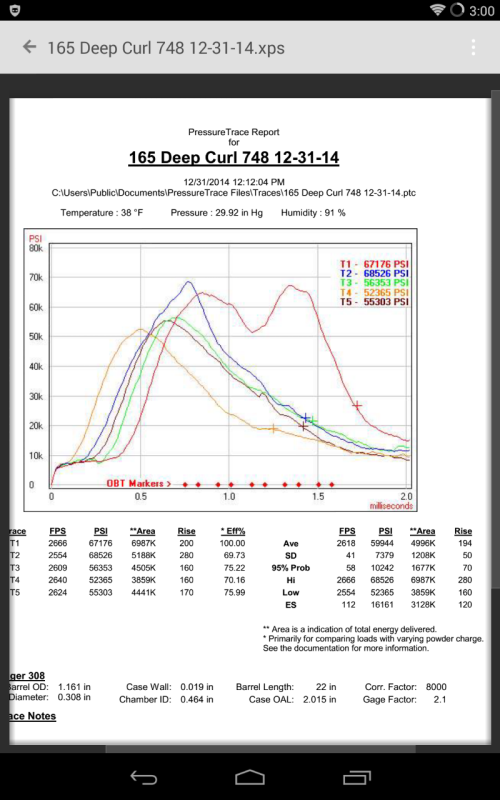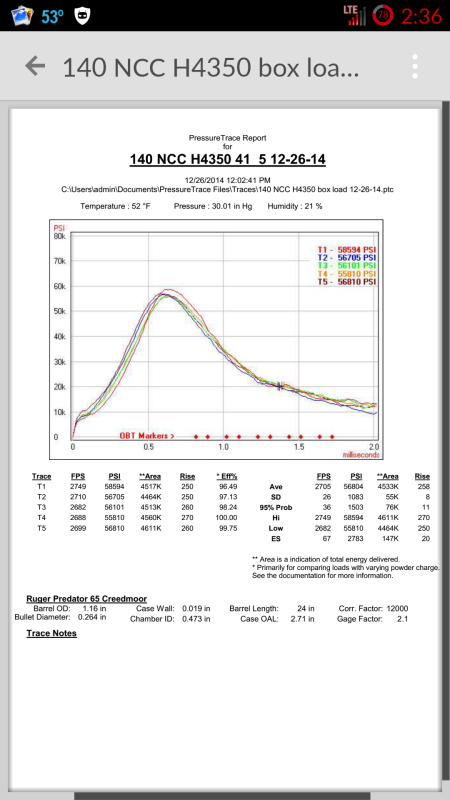
Originally Posted by
darkker

Sorry for crowding the reply here, spacebar is acting funny... Lots of very bad info here that keeps getting repeated online, so lets get you straightened out. 1) Especially with most data that is actually tested and not a re-print, why do you think the loads are conservative? Since every single bottle of powder sold has a big fat warning saying: "Drop loads 10% when switching lots". Some powder re-sellers actually list nominal lot variations, most powders have a allowable lot swings of 10%. Since data RARELY tells you WHEN the data was tested, and they NEVER list lot numbers tested.... Buying the same brand name on the bottle in no way means you have "The same" powder as was tested. There is a bit more to this, that gets covered in the following questions you asked. 2) So we know the powder you are using isn't the same, and you state what you are loading isn't the same. Well, when things are different, they are different. Some manuals shoot loads in a particular rifle for published velocities, but essentially all SAAMI cartridges are tested using standard protocols; meaning: Minimum-spec universal receivers, minimum bore/groove spec barrels, minimum spec chambers/throats. A mass produced rifle is none of those things. With mass produced tooling there are varying states of allowable wear, that is why drawings have tollerances. No mfgr. stamps a rifle with the final specs that a chamber, or barrel was built to. So again, things are different. 3) This is a preference deal, but from a 100 yard zero that is only 7 mils of "up", that is as easy as it gets. The greater issue is the velocity. That takes you near 1350 fps, which is dangerously slow, when it comes to operational velocity. 4) Again, they didn't list lot numbers tested; so don't assume you have the same burning rate in your powder. Having less jump to the lands is again a bit of an assumption, but will increase your pressure as there is less by-pass. 5) They didn't say that is what you "should" be seeing, they claim in minimum spec equipment, that is what they produced. Different equipment, different lots, different results. 6) "Signs" are as helpful as seeing Jesus in your toast.... They don't tell you ANYTHING resembling accuracy, they tell you whether or not your reached the yield strength of your equipment only! SAAMI originally used lead crushers, LUP. then pressures increased and they discovered that those units weren't accurate, so they moved to very carefully calibrated Copper Crushers, CUP. Again pressures in firearms increased and things went south. Long ago this was all over the gun rags of the day. SAAMI held some very carefully controlled reference lots of powder and sent it to the major players, such as Remington, Federal, et al. They all used their calibrated crushers in the same test equipment and found that when testing OVER approximately 45,000 psi, that copper crushers reported THE SAME load reporting differing results by 20-25,000 psi. That is why current testing is done with Conformal transducers, or some piezo equipment. Again as no one since Olin in the 1950's openly states what specs their alloy in cases are, a random reloader, using random powder, in a random case, with random primers, in a mass produced rifle; isn't mystically going to know if he is at SAAMI pressure for the cartridge he is firing. He only knows that his primers or cases reached their tensile strength and streched beyond the yield point. From the Pressure Trace work we've done, and some insider info from a few case makers; a reloader will "notice" some of the "usual signs" of pressure when you are around 70-75,000 psi. 7) Yes I have loaded beyond a books published max CHARGE, but it isn't because some limp-wristed lawyer backed off the loading data..... Book max velocity is SAAMI max pressure for that cartridge. Regardless of the charge weight(within reason now, sometimes powders run-away) if you reach book max velocity you have also reached book max pressure. I've posted some of my pressure testing of Superformance powder in the Creedmoor here. In those tests, my first 8# of Superformance was 12% SLOWER than what was tested in the 9th Hornady manual. My second 8# jug is very very slightly faster than that data. So did I go past book pressure? No I did not, I just went past book charge amount. Cheers, and happy loading!!



 Reply With Quote
Reply With Quote










Bookmarks